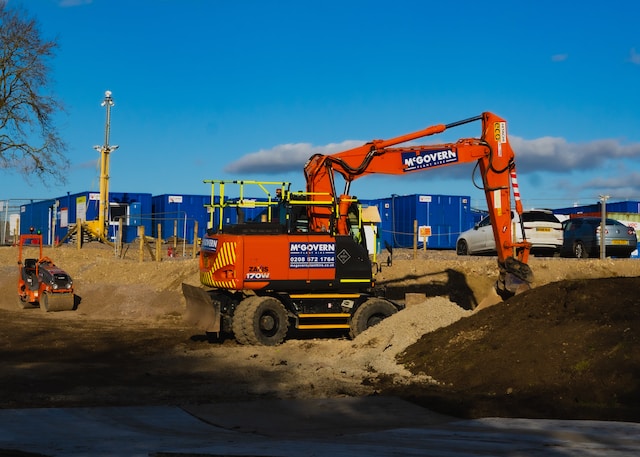In the realm of real estate, finding the ideal plot for development is both an art and a science. It requires a careful blend of creativity, market analysis, and due diligence. Whether you’re a seasoned developer or an aspiring one, selecting the right plot can make or break a project’s success. In this article, we will guide you through the process of finding the best plot for development, providing you with tips and insights to maximize your chances of success.
- Define Your Objectives
Before venturing into the search for a plot, it’s crucial to clarify your objectives. Ask yourself the following questions: What type of development are you aiming for? What is your target market? What are the key features and amenities you desire? Understanding your goals will help narrow down the search and focus your efforts on finding the best plot that aligns with your vision.
- Location Analysis
One of the most critical factors in finding the best plot is its location. Conduct a thorough analysis of various locations, considering factors like accessibility, demographic trends, proximity to amenities, and future development prospects. Look for areas with growth potential, such as upcoming infrastructure projects or revitalization initiatives. Additionally, research the local market dynamics, including supply and demand trends, competition, and rental or resale prospects. A comprehensive location analysis will enable you to make informed decisions that align with your development goals.
- Zoning and Regulations
Understanding the zoning regulations and planning permissions is paramount when searching for a plot. Check with local authorities for the zoning restrictions, building codes, and any specific regulations that may affect your development plans. Ensure that the plot is suitable for your desired project, and be aware of any limitations or potential hurdles. Consult experienced professionals, such as land use planners or real estate attorneys, to clarify any concerns and mitigate potential risks.
- Feasibility Study
Performing a feasibility study is essential to determine the viability of a plot for development. Evaluate the economic and technical aspects of the project, such as construction costs, potential returns, and the feasibility of infrastructure requirements. Conduct a detailed cost-benefit analysis to ascertain whether the plot is worth pursuing. Engage the expertise of architects, engineers, and other professionals who can provide valuable insights into the project’s feasibility.
- Infrastructure and Utilities
When evaluating a plot, consider the existing infrastructure and utilities available. Assess the accessibility to transportation routes, availability of water and electricity, sewage systems, and telecommunication networks. Adequate infrastructure and utilities are crucial for the long-term success and marketability of your development. If significant investments will be required to bring these utilities to the plot, factor those costs into your overall feasibility analysis.
- Environmental Considerations
Given the growing importance of sustainable development, it’s crucial to consider environmental factors when searching for a plot. Assess any environmental risks or constraints associated with the plot, such as flood zones or protected areas. Consider the impact your development may have on the surrounding environment and seek opportunities to incorporate eco-friendly features. Going green not only benefits the planet but also enhances the marketability and appeal of your project.
- Site Characteristics and Condition
Examine the physical characteristics of the plot to ensure it aligns with your development vision. Consider factors such as topography, soil conditions, and any natural features that may shape the design and functionality of your project. Conduct a thorough site survey to identify any potential challenges, such as contamination, slope stability, or geological hazards. Understanding the site’s characteristics and conditions will allow you to plan and budget accordingly.
- Risk Assessment and Mitigation
Every development project carries inherent risks, and it’s crucial to identify and mitigate them effectively. Evaluate both external risks, such as market fluctuations or macroeconomic factors, as well as project-specific risks, such as planning delays or construction complexities. Develop a comprehensive risk management plan, considering strategies to minimize or mitigate potential risks. Adequate risk assessment and mitigation planning will ensure a smoother development process and minimize any negative impact on the project.
- Networking and Relationships
In the real estate industry, strong networks and relationships can prove invaluable when seeking the best plot for development. Build connections with local real estate agents, landowners, developers, and professionals who can provide insider information or lead you to potential opportunities. Attend industry events, seminars, and conferences to expand your network and stay up-to-date with the latest market trends. Collaborating with like-minded individuals can open doors and present you with hidden gems in the quest for the perfect plot.
Conclusion
Finding the best plot for development requires a comprehensive and systematic approach. By defining your objectives, conducting thorough analysis, and navigating through regulatory and environmental considerations, you can increase your chances of success.
Keep in mind that every development opportunity comes with its unique set of challenges and opportunities. With proper research, due diligence, and a committed approach, you’ll pave your way to finding the plot that perfectly aligns with your development objectives.

